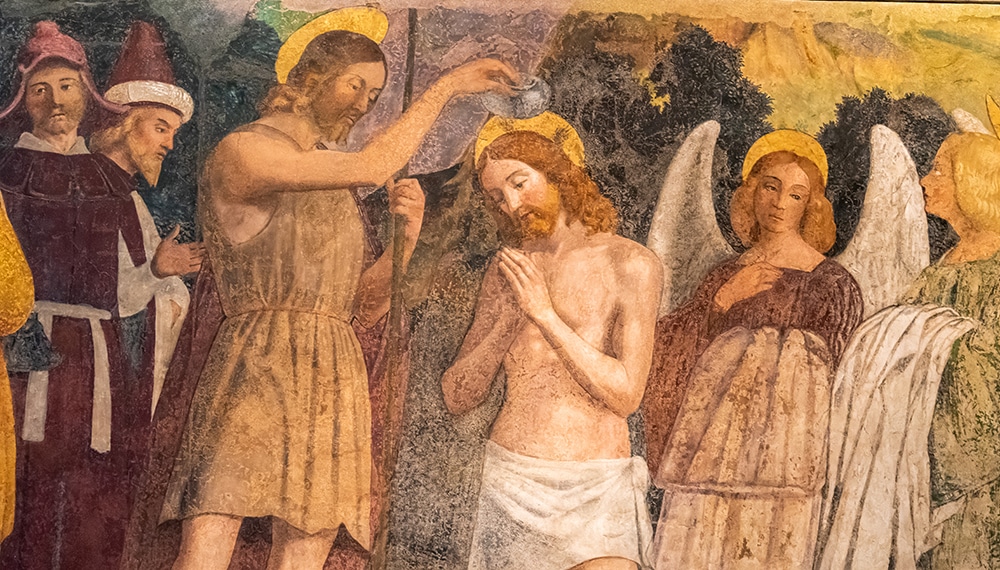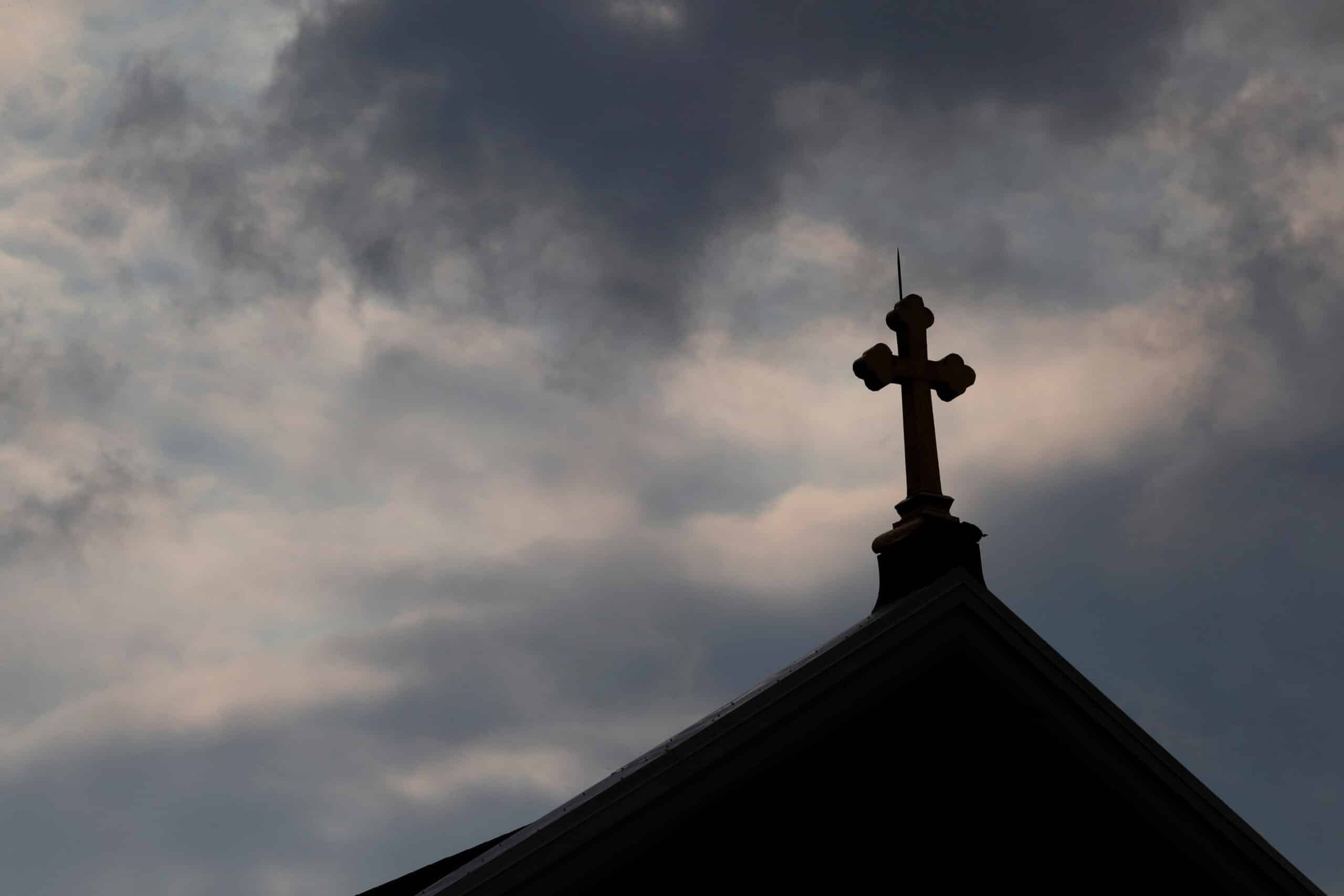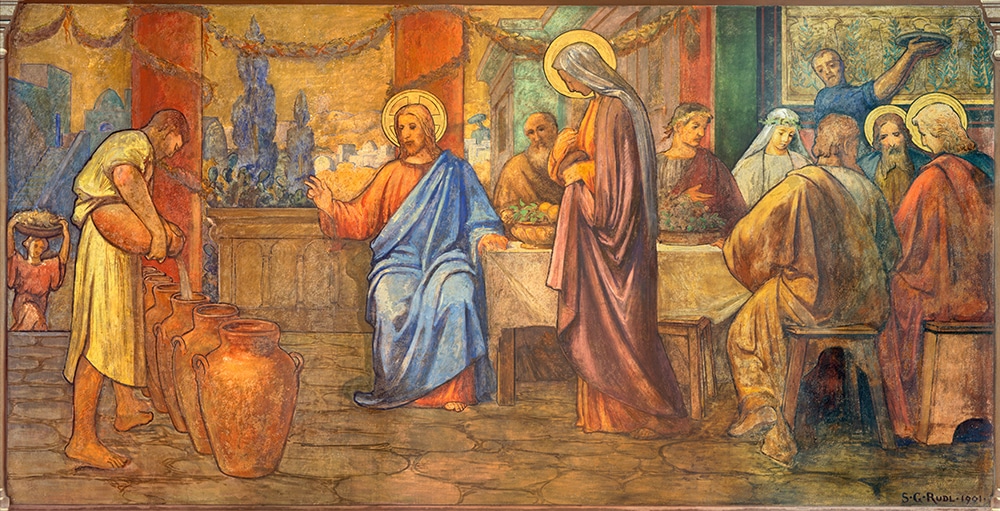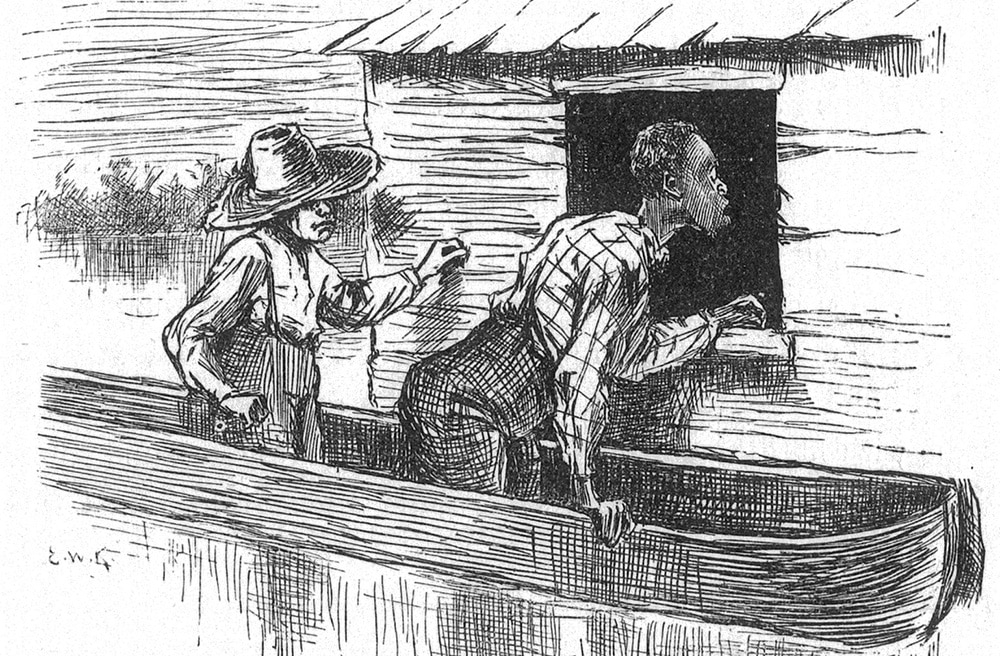 In this Sunday’s Gospel, Luke brings us to the edge of the Jordan River, where John is baptizing all those who wish to repent and begin a new life. Indeed, Luke says that “everyone” is coming — “crowds” of people are seeking to be baptized. As the passage in Luke 3 unfolds, we learn that even Jesus comes to be baptized by John in the Jordan River.
In this Sunday’s Gospel, Luke brings us to the edge of the Jordan River, where John is baptizing all those who wish to repent and begin a new life. Indeed, Luke says that “everyone” is coming — “crowds” of people are seeking to be baptized. As the passage in Luke 3 unfolds, we learn that even Jesus comes to be baptized by John in the Jordan River.
As Luke tells it, the baptism of Jesus is quite an extraordinary event: “After all the people had been baptized and Jesus also had been baptized and was praying, heaven was opened and the holy Spirit descended upon him in bodily form like a dove. And a voice came from heaven, ‘You are my beloved Son; with you I am well pleased'” (3:21-22). Wow! The heavens opened! The Holy Spirit appeared! God’s voice was heard! That man, praying right there in the water, is the beloved Son.
Maybe we, too, wish we had been on the banks of the Jordan River that day?
| January 9 – The Baptism of the Lord |
|---|
|
Is 42:1-4, 6-7 |
Today, the Jordan River doesn’t look like much. As it winds its way down Israel’s eastern border, water is siphoned off for irrigation again and again. If we were to travel to Israel with the expectation of a mighty and magnificent river — a river fit for God and the dramatic baptism of Our Lord — we would be disappointed.
But, then again, we shouldn’t be! The real drama of Luke’s narrative is evidenced by the historical ordinariness of the Jordan River. As Luke leads us to the edge of the Jordan, he brings us through the history of first-century Israel into which God entered. In Luke 3, we learn about the high priests and the Roman governors, and we also read Jesus’ genealogy. The Jordan River, marked as it is by history, is evidence of the mystery of the Incarnation. This river is evidence that God himself entered into our history as a man, so as to love us. This unimpressive river is the place to which God himself came. Thus we should not be disappointed: This scene is an image of the Gospel.
Accordingly, Jesus came to John at the Jordan River precisely when a crowd of people had gathered there. As we know, these crowds desired new life. They came to the waters because they desired conversion. In Jesus of Nazareth, Pope Benedict XVI reminds us that conversion is not so much a turning away from, but a turning toward. Thus the call of the Gospel is also imaged in this scene: The whole repentant crowd is turned toward Christ.
And, as recalled above, we know what they see and hear. But let’s take a closer look.
They see Christ being baptized and praying to the Father. They see the heavens torn open and the descent of the Spirit. They hear God call Jesus, “the beloved Son,” the one with whom God is “well pleased.” To take a closer look, we have to ask what the crowds are truly witnessing when they see all this. In his book “Jesus of Nazareth,” Pope Benedict XVI puts it this way: “Heaven [stood] open above Jesus.” The crowd witnessed the union between the Father and the Son and the Holy Spirit. They witness the life and the love of the Trinity; the new life they seek.
The extent of this love is shown in Christ coming to this place and entering into the waters of the Jordan with the “crowd,” with “everyone.” Reading and reflecting on Luke’s Gospel, we, too, are a part of this “crowd,” this “everyone.” We are on the banks of the Jordan. “Heaven is open above us.” God’s love flows in and floods all around us.
Catherine Cavadini, Ph.D., is the assistant chair of the Department of Theology and director of the master’s in theology program at the University of Notre Dame.







